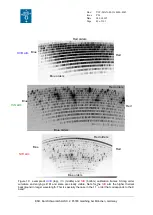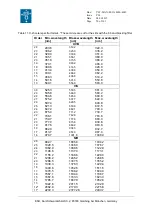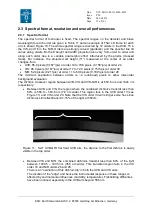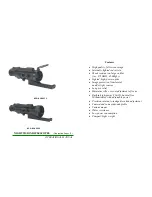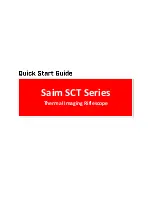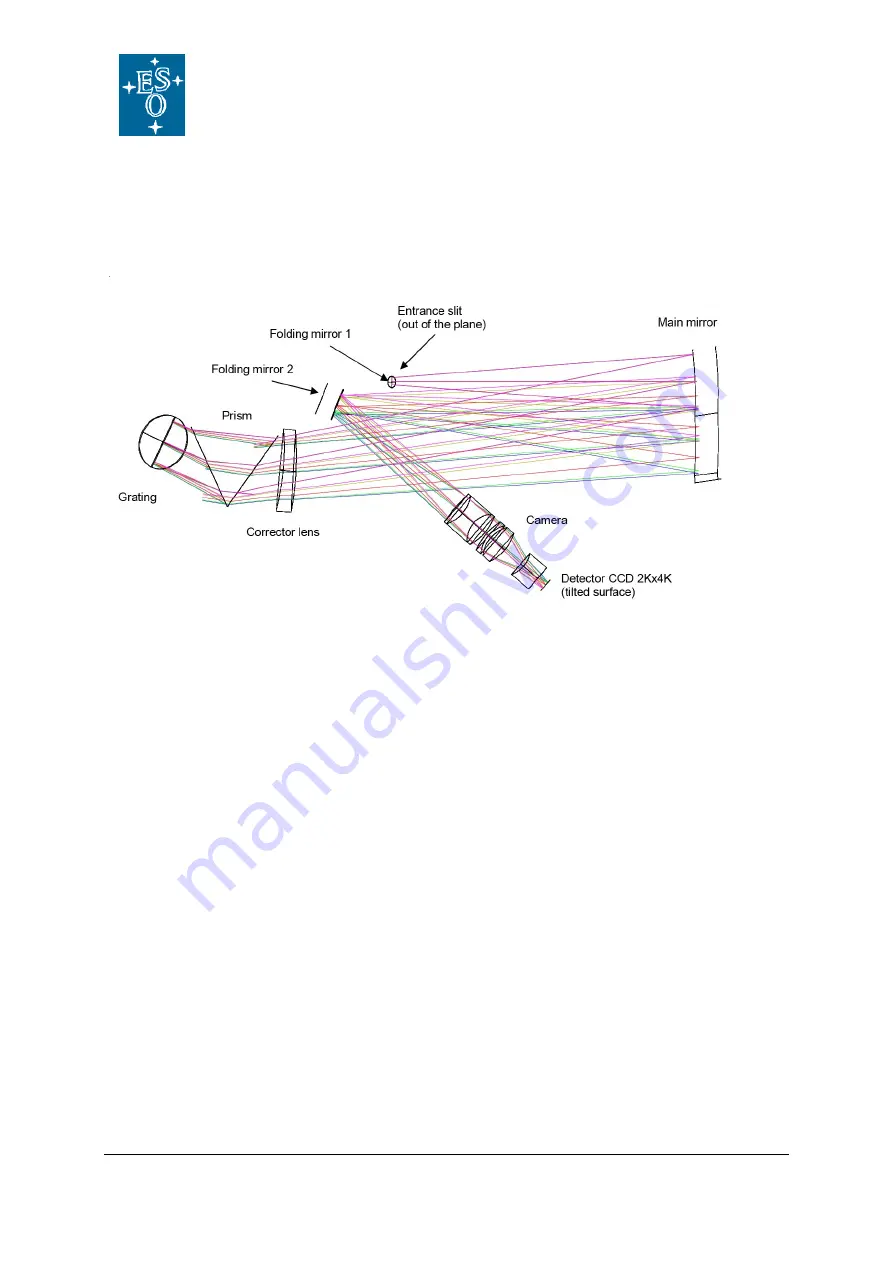
Doc:
Issue
Date
Page
VLT-MAN-ESO-14650-4942
P96
24.06.2015
36 of 161
ESO, Karl-Schwarzschild-Str. 2, 85748 Garching bei München, Germany
2.2.4.2 Optical layout
The optical layout of the UVB spectrograph is presented in Figure 7. Light from the entrance
slit, placed behind the plane of the figure, feeds a 5˚ off-axis Maksutov-type collimator
through a folding mirror. The collimator consists of a spherical mirror and a diverging fused
silica corrector lens with only spherical surfaces. The collimated beam passes through a 60˚
silica prism twice to gain enough cross-dispersion. Main dispersion is achieved through a
180 grooves/mm échelle grating blazed at 41.77˚. The off-blaze angle is 0.0˚, while the off-
plane angle is 2.2˚. After dispersion, the collimator creates an intermediate spectrum near
the entrance slit, where a second folding mirror has been placed. This folding mirror acts also
as field mirror. Then a dioptric camera (4 lens groups with CaF2 or silica lenses, 1 aspherical
surface) reimages the cross-dispersed spectrum at f/2.7 (plate scale 9.31”/mm) onto a
detector that is slightly tilted to compensate for a variation of best focus with wavelength. The
back focal length is rather sensitive to temperature changes. It varies by ~22.7µm/˚C which
corresponds to a defocus of 9µm/˚C or ~0.08”/˚C. This is automatically compensated at the
beginning of every exposure by moving the doublet of the camera by -10.9µm/˚C.
Figure 7: The UVB spectrograph optical layout




























